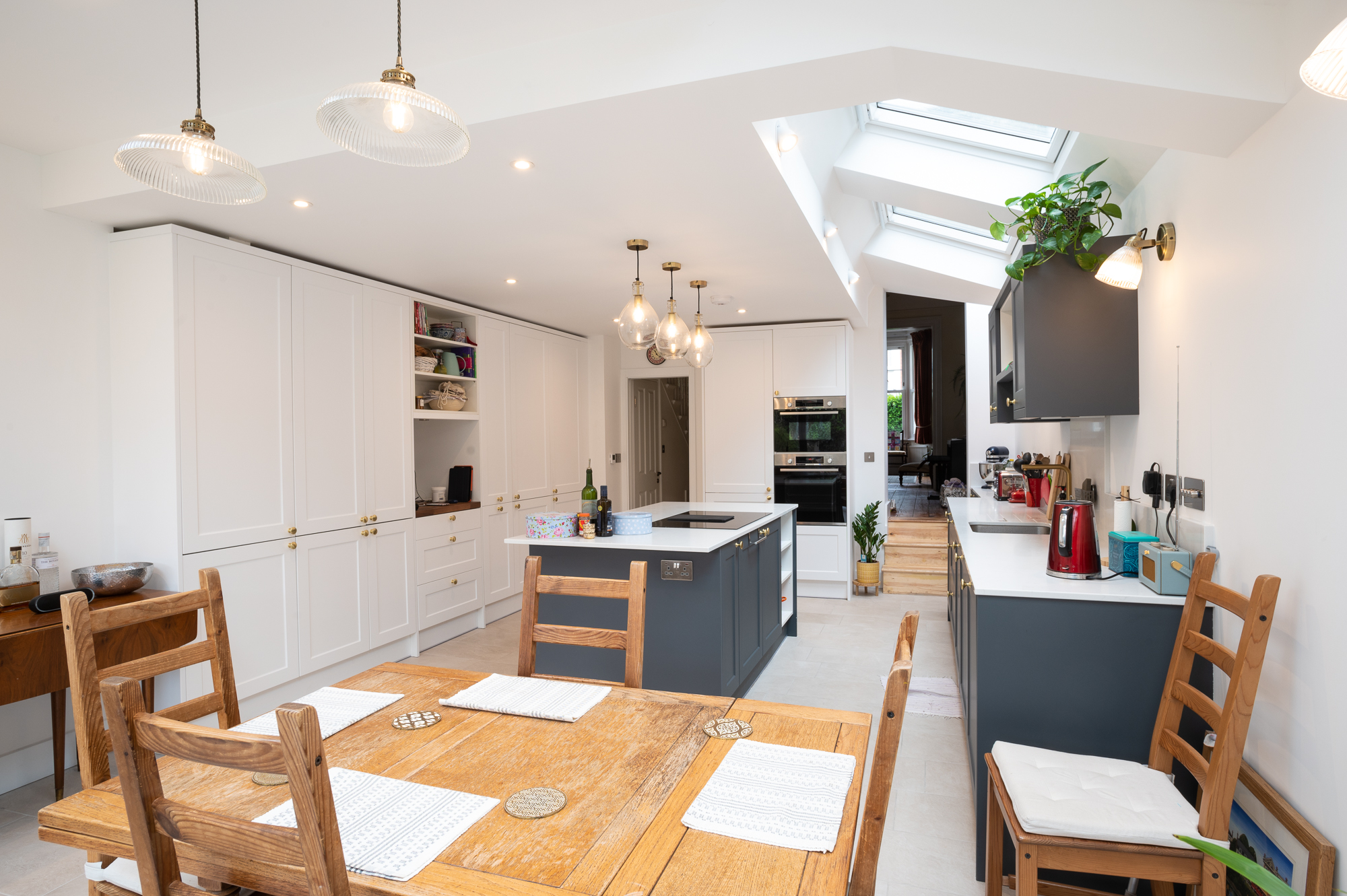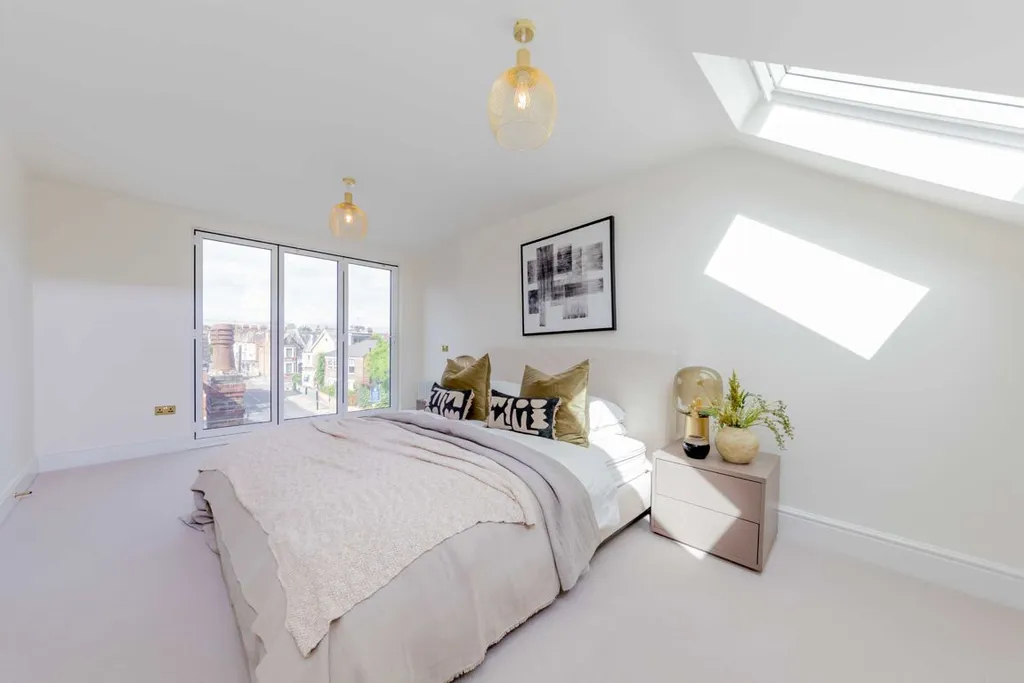Unlawful extensions come with a hefty price in the form of fines and demolitions. Complying with regulations is compulsory. While building a house extension without planning permission is possible, there are rules to abide by to stay within your permitted development rights. And, if you are extending beyond the laid out rules, you need proper planning permission for each aspect of your proposed extension. So, what should you know before building near your neighbour’s boundary?
Before we do that let’s tackle the basics.

What is a house extension?
A house extension is an additional living space attached to an existing residential property. It involves expanding the footprint of the house to create more rooms or improve the layout to meet the needs of the homeowners. House extensions are a popular way for homeowners to add space and functionality to their homes without moving.
Here are the primary house extensions types used in Britain;
Side Return – simpler than other extension types, it is a popular home improvement technique that often creates kitchen extensions. The Side Return expands the footprint of terraced and semi-detached homes to the side along the garden path next to the boundary wall. When executed effectively, this transformation results in a modern layout, ideal for creating an open-plan living area. The original side wall gets removed, and a new party wall is constructed, seamlessly connecting the new addition to the main house. Skylights and glass doors get incorporated to illuminate the enclosed space.
Rear Extension – this addition extends the back of the house onto the rear garden. It can cover the entire width of the property. It receives more natural light and effortlessly integrates with the outdoor surroundings. Compared to a Side Return, the Rear Extension creates a more open and versatile space.
Wraparound Extension – it connects a Side extension and a Rear extension to create an L-shaped expansion that wraps around the house. This configuration offers ample opportunities to increase the home’s square footage, allowing for multiple rooms or a spacious open-plan area. Homeowners can extend the kitchen/dining space in the rear and build additional rooms, such as a utility room or a bathroom at the side.
Double-storey Extension – double-storey side and rear extensions provide twice the space without one foundation and roof. It is an efficient way to expand the property footprint and accommodate the growing needs of the home by building upwards as well as to the side and back.

How does it concern your neighbours?
A house extension can affect the party wall, which impacts adjoining owners. Changes to your property can have various effects on neighbouring properties, and these effects can be both positive and negative. The impact largely depends on the size, design, location, and construction material.
A significant concern for neighbours is the potential obstruction of natural light and loss of privacy caused by the new extension. If the extension is too close to neighbouring properties, it might block sunlight from reaching their homes or invade their privacy. Neighbours might feel uncomfortable if the design includes large windows or balconies that allow direct views into their private spaces.
The building work itself can cause noise and disruption for neighbours, especially if the extension involves significant digging, drilling, or other disruptive activities. Therefore informing neighbours in advance and operating within your legal rights are important.
Depending on the design and quality of the extension, it could impact the property values of neighbouring homes. A well-designed and executed extension might enhance the overall value of the neighbourhood, while a poorly done one could have a negative effect.

Do you need planning permission for a house extension?
The short answer is no. As long as you adhere to the guidelines of permitted developments (PD), planning permission is not necessary. You can make sure by contacting your local planning authority through your local council if your plans need permission. Any constructions outside PD rights need planning permission.

What are property boundaries?
A boundary separates one property from another. It could be a boundary wall, a hedge, or a fence wall that runs along the side of the property. It’s important to know the precise location of boundaries to understand the exact area of land that belongs to the property. The Title Plan shows where the boundaries for your property are.
How close can you build your extension to your neighbours’ boundary?
If you possess either Permitted Development Rights or have obtained Planning Permission, you can build your extension up to 50mm from your neighbours’ boundary. It could be an appropriate choice if you cannot obtain a Party Wall Agreement.
On the other hand, if you can reach a mutual understanding with your neighbour and successfully secure a Party Wall Agreement, you will be allowed to build astride the boundary wall line. It is the recommended approach if you aim to maximise the size of your home extension.
Local building codes and regulations
The following rules apply to extensions to build within permitted development rights;
All extensions
- Extensions (including previous ones) can only cover 50% of the area around the original house.
- The extensions must not exceed the height of the highest part of the current roof or have eaves higher than the existing eaves.
- If the extension is within 2 metres of the boundary, the height at the eaves must not exceed 3 metres.
- You cannot build an extension in front of the ‘principal elevation’ or, if facing a highway, the ‘side elevation.’
- The extensions should not have the following features:
- Verandas, balconies, or raised platforms.
- Microwave antenna (e.g., TV aerial or satellite dish).
- Chimney, flue, or soil and vent pipe.
- Any alteration to the existing house’s roof.
- You cannot use exterior cladding on extensions on designated land.
- The materials used for any exterior work must closely match the appearance of those already present on the existing house.
Side Extensions
- If the extension extends beyond the ‘side elevation’ of the original house, it must adhere to the following restrictions:
- It cannot exceed a height of 4 metres.
- It can only be a single storey in height.
- It can only be up to half the width of the original house.
- All side extensions on conservation areas will require householder planning permission.
Single-storey Extensions
- Single-storey Rear extensions can only extend up to 8m from the property’s original rear wall of a detached house and 6m from a semi-detached or terraced property when not in a conservation area.
- A single-storey extension should be no higher than 4m.
Extensions of more than one storey
- The extension must not protrude beyond the rear wall of the original house by more than 3 metres, nor be within 7 metres of any boundary opposite the rear wall of the house.
- The roof pitch should match the existing house as closely as possible. This requirement also applies to any upper storey constructed on an existing extension.
- Upper-floor windows on a side elevation must be obscure-glazed and non-opening unless the opening section is more than 1.7 metres above the floor.
- All side extensions of more than one storey will need householder planning permission.
- For homes in conservation areas, householder planning permission is necessary for all rear extensions of more than one storey.
What is a Party Wall Agreement?
A Party Wall Agreement is a contractual arrangement between you and your neighbour, which establishes a mutual understanding regarding any construction work that may impact a shared wall, boundary, or outbuilding.
The Party Wall Act 1996 is applicable to houses in England and Wales and was created to prevent building work that might jeopardise the structural stability of shared walls (party walls) or adjacent properties. This legislation serves as a means to prevent and address disputes between neighbours that may arise due to construction activities.
What are the instances you need a party wall agreement?
- Any construction work affecting shared walls (party walls) between semi-detached and terraced houses.
- Construction work on garden boundary walls.
- Excavation or underpinning work on or within 3-6m of the party wall.
- Inserting a damp proof course into a party wall.
- Making party walls thicker or higher.
- Building a second-story extension above a shared wall.
- Constructing a new wall up to or attached to the party wall.
What is the process of obtaining a party wall agreement?
You have to inform your neighbours about the proposed building work between two months and a year in advance of the work starting. It is called a Party Wall Notice, and it details the work you intend to carry out near or on a party wall. Planning permission is not required when serving a Party Wall Notice, as you have up to a year to start work from the date of the notice. Speaking to your neighbours before serving a written notice can help avoid misunderstandings and reassure them that the proposed work is safe and lawful.
Your neighbours will have 14 days to respond to your request. Upon failure to do so, another letter requesting a response gets sent, allocating another 10 days to reply.
Failure to respond or comply requires you to appoint a party wall surveyor for a Party Wall Award. Your neighbour can request the opinion of a second professional over the one you have appointed. If they refuse or fail to appoint a surveyor themselves, you can appoint one on their behalf. You are obliged to pay their legal fees for the second surveyor. Mutually agreeing to cover their legal costs for a second surveyor will speed up the Party Wall Agreement necessary to build an extension.
The appointed surveyor or surveyors representing each party then agree on a Party Wall Reward. If you disagree with the award, you can appeal against it at a county court within 14 days of receiving it.
Conclusion
Following the proper legal route to building an extension will ensure a lawful expansion of your property footprint. An extension can offer numerous benefits for a growing family, and the only way to enjoy them is to follow the guidelines that prevent any lawsuits or demolitions. Good Design & Build work with party wall surveyors and assist with Party Wall Agreements. We even apply for planning permission on your behalf. We work within the frame of law, and our planning experts are well-versed with the latest local regulations. What sort of an extension do you have in mind for your home?




